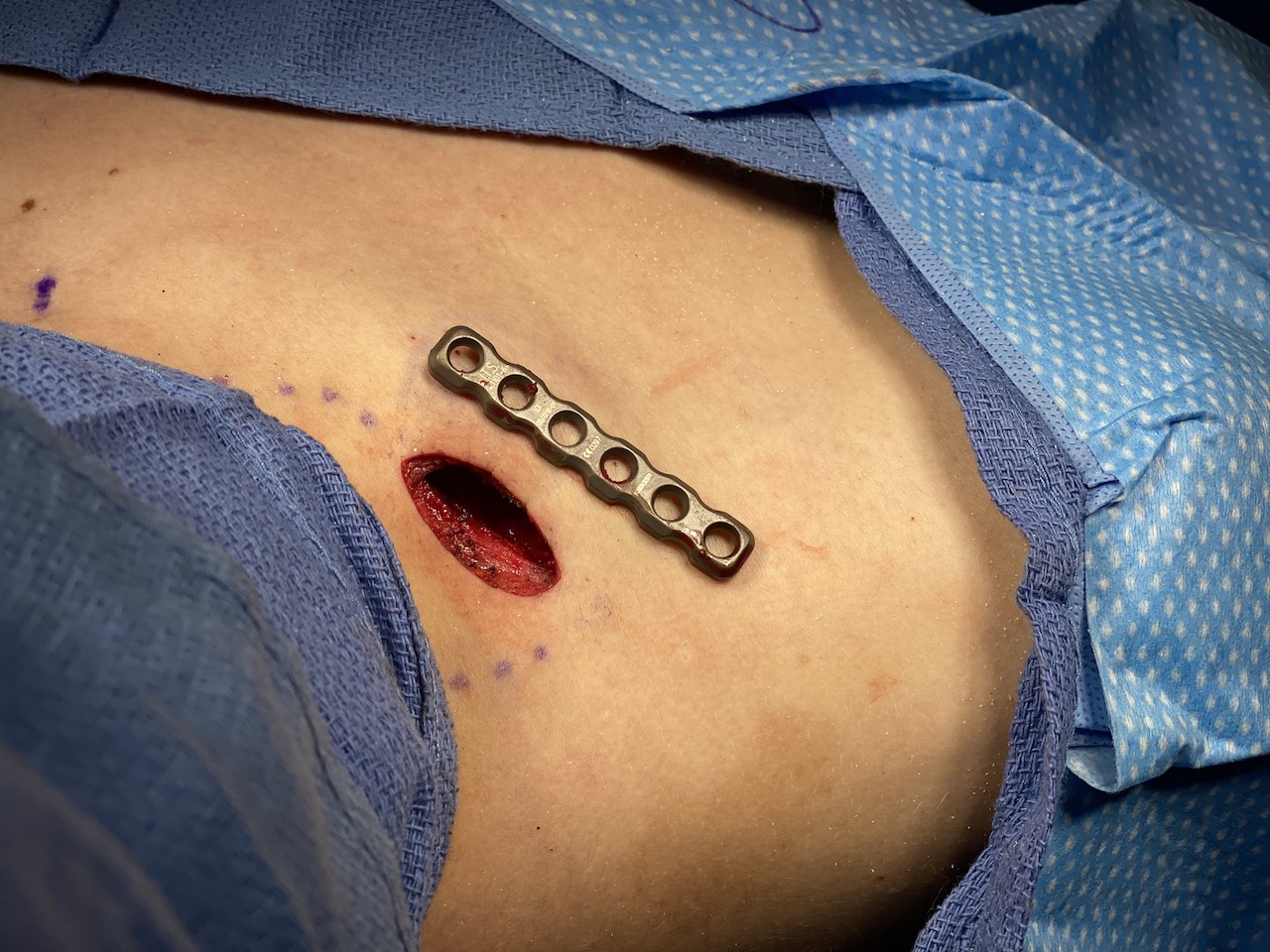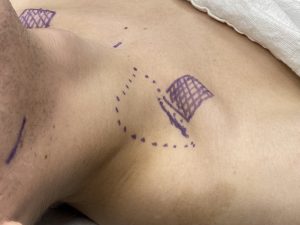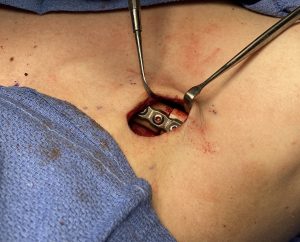Background: Reducing the length of the clavicle bones has a direct effect on the appearance of the shoulders. Their width and shape is affected by the horizontal support of the clavicles. Reducing any amount of the clavicle support will naturally cause the shoulders to move or fall inward. The shoulders change shape by a combination of a horizontally inward and anterior forward movement based on the natural lazy S shape of the clavicle. This movement is mainly horizontal and the anterior movement is much more minor.
To hold this dimensional change as well as resist any separation of the two opposed bone ends early after surgery from excessive arm movement the use of rigid plate and screw fixation is essential. How much bone fixation is required for clavicle osteotomies borrows some but not all of the concepts from clavicle fracture repair. In clavicle fracture repair these is less concern about the length of the incision and the amount of hardware implanted. Uncomplicated healing and a full functional recovery supersede any aspect of the aesthetic outcome. In elective clavicle reduction osteotomies however the aesthetic outcome of the procedure plays a more prominent role.
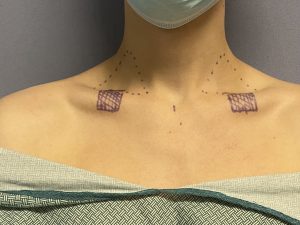
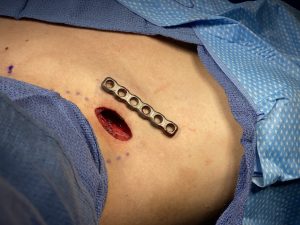
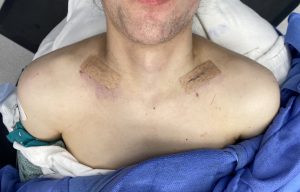
Plate and screw fixation is the essential step in clavicle reduction and I have used multiple hardware configurations to do so. The key concept with its use is what is the least amount of fixation that will effectively achieve consistent bone healing. In aesthetic surgery this is important as the patient bears the cost of the medical devices. Thus, on the one hand, you want to use enough fixation to make sure uncomplicated healing occurs but, on the other hand, you don’t want to use more than is absolutely necessary as this adds to the cost of the surgery for the patient.
Another frequently asked question is do I need to have the plate and screws removed later. The answer is it is optional. They can be removed anytime six months after the surgery if the patient finds them bothersome either aesthetically (prominent) or functionally. (discomfort) To date few patients have requested to do so.
Case Highlights:
1) Clavicle reduction is an effective procedure for shoulder narrowing that has a significant recovery but usually heals in an uncomplicated fashion.
2) The plate and screw fixation is the key to the procedure in which a delicate balance exists between the amount of hardware used/necessary and its cost.
3) While the fixation hardware can be removed secondarily, few patients to date have elected to do so.
Dr. Barry Eppley
Indianapolis, Indiana

